Jazz, a genre known for its vibrancy and diversity, has been a cornerstone in the world of music. Originating from the heart of New Orleans, Jazz has branched into multiple forms, each presenting a unique perspective on the genre. This article will explore the various types of Jazz music, highlighting how each has shaped and influenced the broader music scene. From the rhythmic Swing to the inventive Bebop, Jazz continues to be a symbol of musical creativity and evolution.
Jazz music holds a significant place in both music and culture. For those interested in the genre’s most influential works, our articles on the best jazz albums of all time and the best jazz songs offer valuable insights. These pieces highlight the albums and tracks that have become essential to understanding and appreciating Jazz.
Characteristics of Jazz Music

Jazz music, a genre rich in diversity and expression, exhibits several common elements across its various styles:
Improvisation: At the heart of jazz is improvisation. This is the spontaneous creation of melodies and rhythms that aren’t written in the music score. It allows jazz musicians to express their individuality and react in the moment to their fellow musicians. Improvisation is a defining feature of jazz, distinguishing it from many other music genres.
Complex Harmonies: Jazz frequently uses extended chords and alternative chord substitutions, creating rich and complex harmonies. These harmonies provide a vast landscape for improvisation and play a significant role in the genre’s distinctive sound.
Syncopation and Swing Rhythms: Syncopation, where the emphasis in a rhythm is shifted from strong beats to off-beats, is prevalent in jazz. Additionally, swing rhythms, which are a series of long and short notes that aren’t exactly aligned with the regular meter, give jazz its characteristic groovy feel.
Interaction and Collaboration: Jazz involves a high level of group interaction and communication. Musicians often play off each other, responding to and building upon each other’s improvisations, creating a conversational flow.
Use of Blues Elements: Many jazz styles incorporate elements of the blues, particularly its characteristic 12-bar structure and the use of blue notes – notes that are slightly lower in pitch than those in the traditional major scale.
Rhythmic Complexity: Jazz rhythms can be complex, with musicians often playing different rhythms simultaneously. This polyrhythmic nature contributes to the genre’s dynamic and exciting feel.
The role of innovation in jazz cannot be overstated. Jazz has continually evolved, embracing influences from other music styles and cultures. This openness to innovation has led to the birth of numerous sub-genres within jazz, each with its unique characteristics but still rooted in the fundamental elements of jazz. From the early days of Dixieland and Swing to Bebop, Cool Jazz, Free Jazz, and Fusion, the evolution of jazz reflects a relentless pursuit of creativity and exploration.
1. Swing Jazz
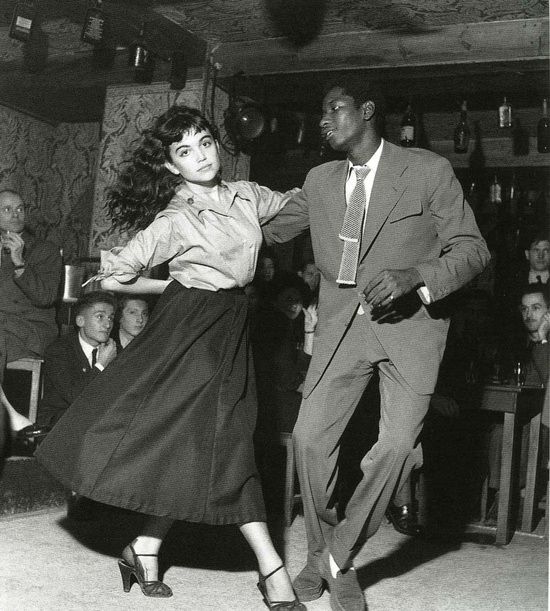
Swing Jazz, a hallmark of the 1930s and 1940s, is renowned for its lively rhythms and enthralling melodies that fueled the dance floors of its era. Rooted in the jazz developments of the 1920s, Swing evolved through the innovative arrangements of musicians like Fletcher Henderson and Don Redman. Their use of call-response patterns and smoother rhythmic sensibilities marked a departure from the ‘hot’ dance music of the time and paved the way for Swing’s distinctive style.
Louis Armstrong’s joining of the Henderson Orchestra in 1924 was a significant milestone, introducing greater emphasis on soloists and contributing to the evolution of Swing. This era also saw the rise of other legendary musicians like Duke Ellington, who credited the Henderson band as a key influence.
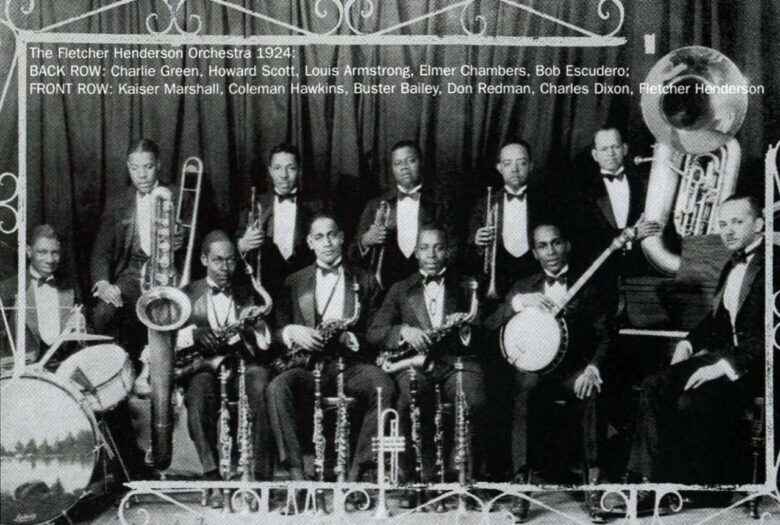
Swing music was characterized by its large bands, typically comprising 12 to 16 players. The big swing bands, such as those led by Benny Goodman, known as the “King of Swing,” often featured prominent soloists like Artie Shaw and Teddy Wilson. Goodman’s band was noted for its integrated lineup, a pioneering move in an era of racial segregation. Another key figure was Fats Waller, renowned for his piano skills and vibrant personality. Cab Calloway, famous for his performances at the Cotton Club in Harlem and his hit “Minnie the Moocher,” was also a major player in the Swing Jazz scene.
Lionel Hampton, acclaimed for being one of the first vibraphone players in jazz, played alongside Louis Armstrong and Benny Goodman before leading his own orchestra in the 1940s. The Swing era also introduced notable guitarists like Django Reinhardt, who, despite a hand injury, developed a unique style of playing that contributed significantly to the genre.
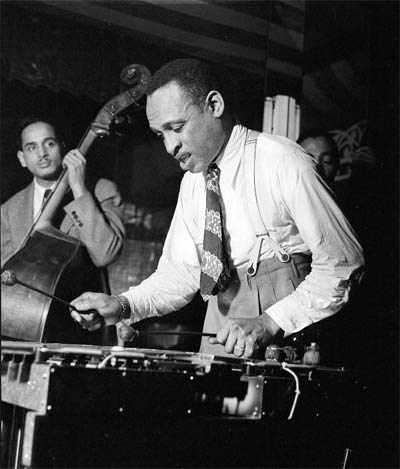
Swing Jazz not only brought a new sound to the jazz world but also played a role in breaking down racial barriers, with musicians from diverse backgrounds coming together to create a sound that captivated a nation. This era of music was a significant period in the history of Jazz, laying the groundwork for future developments in the genre.
2. Bebop
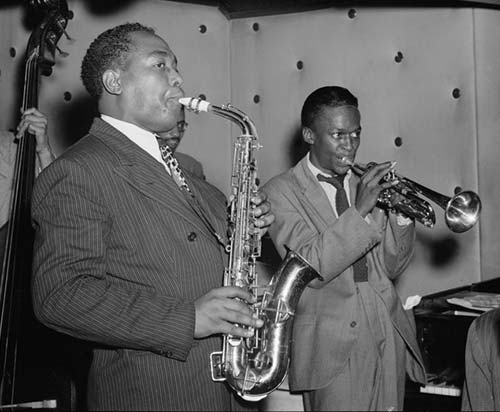
Bebop, also known as bop, emerged in the 1940s as a significant shift in the jazz genre, marking the first kind of modern jazz. This revolutionary style was characterized by its fast tempos, asymmetrical phrasing, intricate melodies, and expanded rhythm sections that went beyond their traditional role as tempo-keepers. Unlike the orchestrated big band arrangements of the swing era, bebop emphasized improvisation, often featuring small combos with instruments like saxophone, trumpet, double bass, drums, and piano.
The term ‘bebop’ is thought to have originated from scat singing, with early uses in the late 1920s and 1930s. It wasn’t until the mid-1940s that the term became widely associated with this new jazz style. Notable musicians like Charlie Parker and Dizzy Gillespie were central to bebop’s development. Their innovation in jazz was a departure from the danceable compositions of the swing era, introducing a style that seemed racing, nervous, and often fragmented to the ears of the public.
Bebop’s chord progressions were often borrowed from popular swing-era compositions, but they were used to create new and more complex melodies. The style incorporated several harmonic devices that were not typical in earlier jazz, such as complicated harmonic substitutions and dissonant intervals. This harmonic complexity in bebop can be traced back to a moment experienced by Charlie Parker in 1942, which significantly influenced his approach to music.
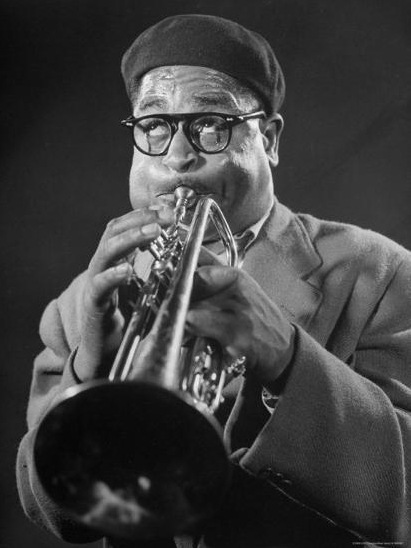
The influence of bebop on modern jazz is profound. It paved the way for various jazz styles, including hard bop and cool jazz. Hard bop, which emerged in the 1950s, incorporated elements of blues and gospel, while cool jazz, pioneered by Miles Davis, was characterized by a more relaxed and less intense approach. Today, traces of bebop’s DNA can be found in the music of contemporary jazz artists, demonstrating its enduring legacy and influence on the genre.
3. Hard Bop
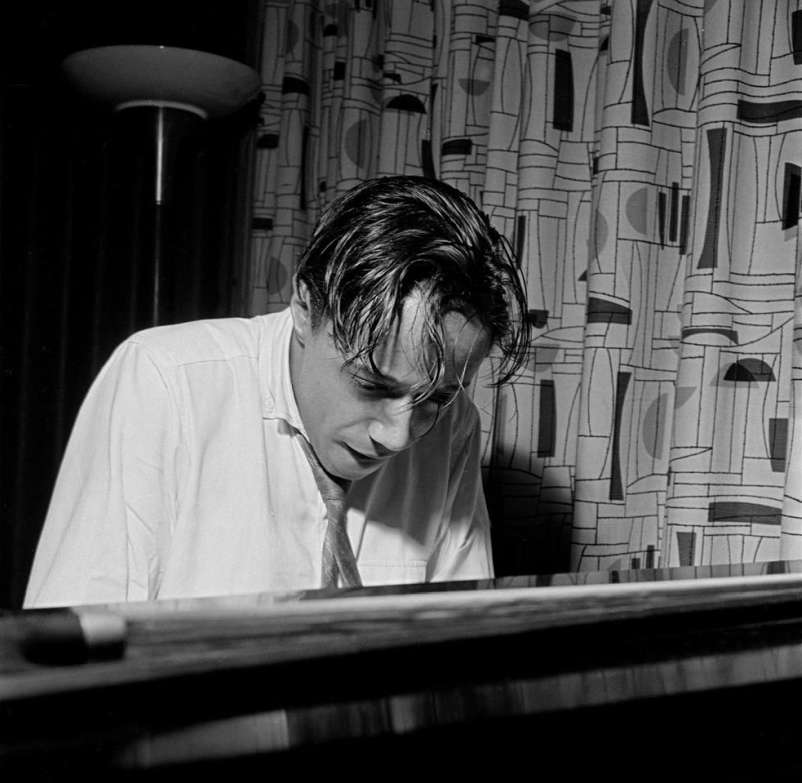
Hard Bop, a pivotal genre in the eras of jazz, originated in the mid-1950s as an evolution from Bebop. This subgenre of jazz music reintroduced the soulful and rhythmic elements of blues and gospel into jazz, marking a significant shift in jazz styles. As one of the key genres in jazz history, Hard Bop was characterized by its intense, emotive melodies and a greater emphasis on improvisation.
Prominent musicians who shaped Hard Bop include Art Blakey, a masterful drummer whose band, the Jazz Messengers, was foundational in defining the Hard Bop style. Horace Silver, a pianist and composer, brought innovative compositions that were instrumental in the genre’s development. Clifford Brown, a virtuoso trumpeter, introduced melodic and harmonic intricacies that significantly influenced Hard Bop. These artists, among others, played vital roles in the evolution and popularization of this jazz genre.
Hard Bop’s impact on the eras of jazz is profound, setting the stage for later developments in jazz and influencing countless musicians in subsequent generations. This genre’s legacy is a testament to its enduring appeal and significance in the world of jazz music.
4. Cool Jazz
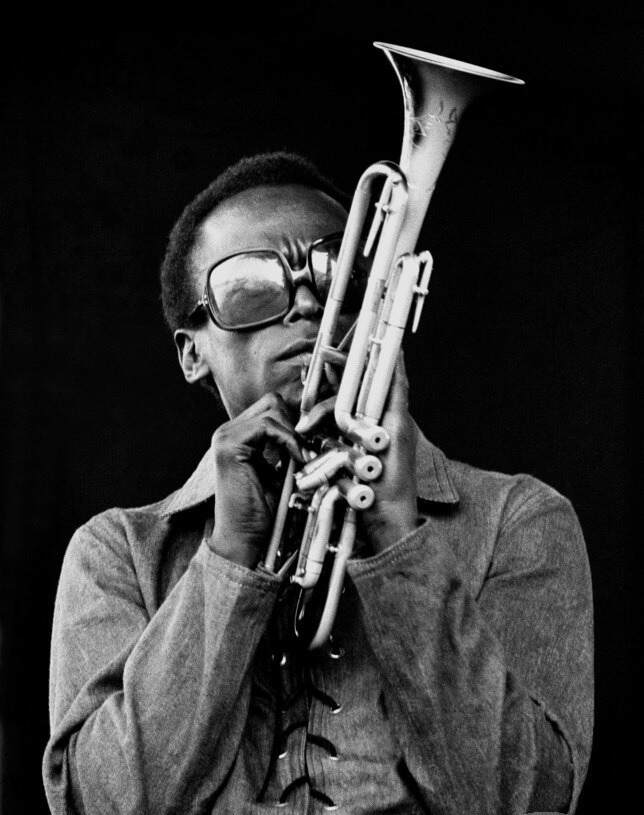
Cool Jazz emerged in the United States in the late 1940s as a distinct counterpoint to the fast-paced and intricate Bebop genre. This style is noted for its understated, relaxed approach, often marked by slower tempos and subdued tonal colors, creating an atmosphere that was the antithesis of the frenetic energy of Bebop.
Miles Davis was a pioneering figure in the Cool Jazz movement. His work, particularly on Charlie Parker’s “Chasin’ the Bird” and the solo on Dizzy Gillespie’s “‘Round Midnight,” laid the groundwork for what would become the Cool Jazz era. In 1948, Davis formed a nonet that included significant figures like Gerry Mulligan and Lee Konitz. This group’s recordings, later compiled as the “Birth of the Cool” (1957), were pivotal in the development of the Cool Jazz style. These sessions were marked by a lighter, more expressive sound, characterized by deliberate note selection and a subtler approach to improvisation.
Gerry Mulligan became a notable name in Cool Jazz, known for his baritone saxophone work. His pianoless quartet with Chet Baker was both innovative and successful, and his later development of a “Tentette” further refined the ideas he explored in the Birth of the Cool sessions. The Modern Jazz Quartet, co-founded by John Lewis, also played a significant role in Cool Jazz, blending classical forms with jazz in a subtle yet swinging style.
Other influential artists in the Cool Jazz scene included Lennie Tristano and Lee Konitz in New York, who developed a cerebral alternative to Bebop, focusing on linear improvisation and complex rhythms. In California, Dave Brubeck, with alto saxophonist Paul Desmond, formed a quartet that contributed significantly to the Cool Jazz style. Their approach differed from Bebop, focusing less on the blues elements characteristic of Charlie Parker’s style.
Cool Jazz’s legacy extends far beyond its initial era, influencing modern jazz styles such as bossa nova and modal jazz. This style represents a quieter, more introspective side of jazz, highlighting the genre’s depth and versatility. Among its many contributions to the jazz world, Cool Jazz has paved the way for the appreciation of slower, more emotive pieces, akin to those found in our collection of the 15 Best Jazz Ballads. Its impact is evident in the evolution of jazz, demonstrating the genre’s capacity for innovation and adaptation.
5. Modal Jazz
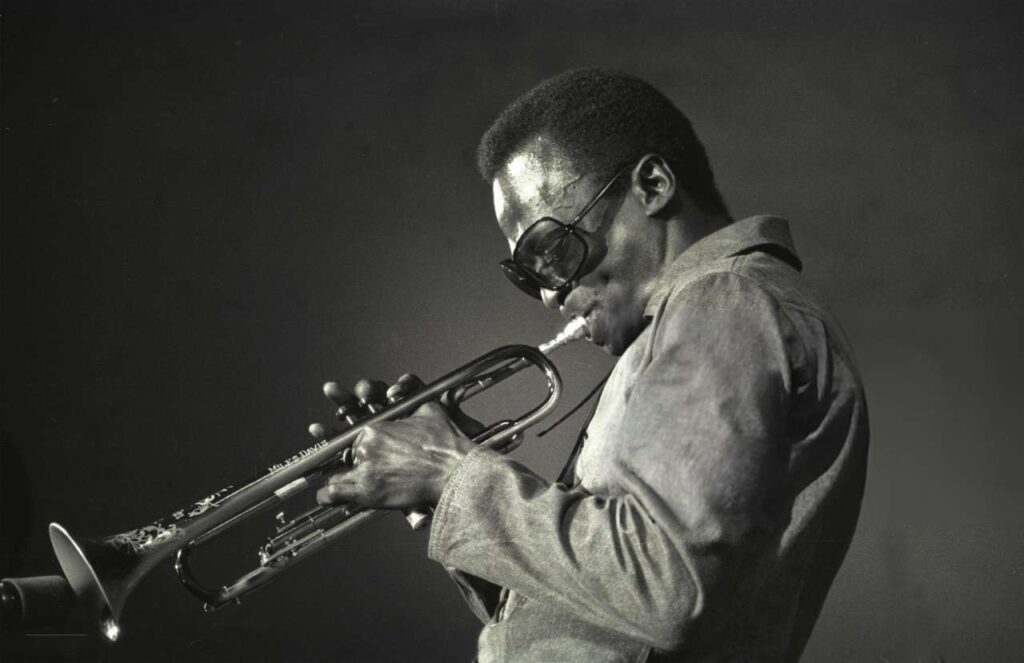
Modal Jazz, a significant development in the jazz genre, emerged towards the end of the 1950s, marking a departure from the conventionally chord-driven structure of earlier jazz styles like Bebop and Hard Bop. This genre is characterized by its use of musical modes as the primary basis for improvisation and composition, rather than relying on a fixed series of chord changes.
In Modal Jazz, the focus is on improvising within a certain mode or scale, allowing for a more fluid and expansive exploration of melodies and harmonies. This approach results in compositions that have a freer, more open structure, often with single harmonies persisting over extended periods. This technique invites soloists to think in terms of modes, offering a different approach to improvisation compared to the chord-based approach of earlier jazz styles.
Miles Davis was a central figure in the development of Modal Jazz. His album “Kind of Blue” is one of the best-selling jazz albums of all time and represents a definitive exploration of modal jazz. In this album, Davis acknowledged the crucial role played by pianist Bill Evans, a former member of George Russell’s ensembles, in his transition from Hard Bop to modal playing. Notably, compositions like “So What” and “Flamenco Sketches” from “Kind of Blue” exemplify the modal approach, using modes like D Dorian and modulating between different modes to create a unique musical landscape.
John Coltrane, another pivotal figure in Modal Jazz, extensively explored the limits of modal improvisation with his quartet. Albums like “Africa/Brass,” “Crescent,” and “A Love Supreme” are recognized as significant contributions to the modal jazz genre. Coltrane’s compositions, such as “Impressions” and “India,” along with his interpretations of standards, have become an integral part of the jazz repertoire, showcasing the depth and versatility of modal improvisation.
Overall, Modal Jazz represents a significant shift in the jazz paradigm, emphasizing a more exploratory approach to melody and harmony, and has had a lasting impact on the development of jazz music.
6. Free Jazz
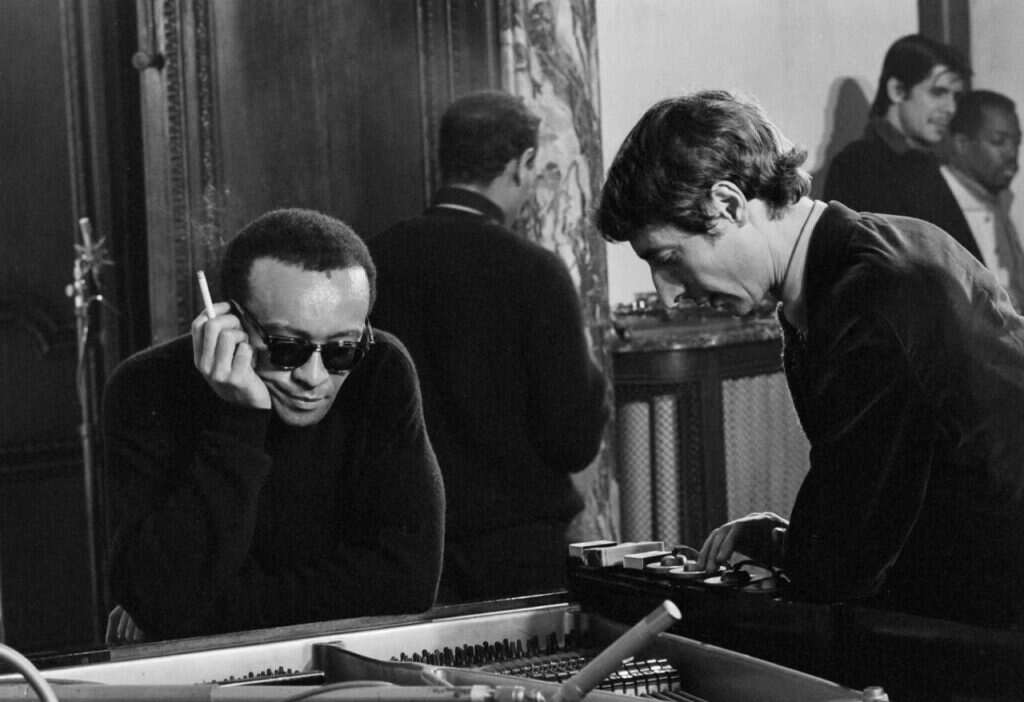
Free Jazz, a radical departure from traditional jazz structures, emerged in the late 1950s and early 1960s. This avant-garde jazz form is defined by its lack of adherence to fixed harmonic structures, chord progressions, or regular tempos. Instead, it embraced a new freedom in improvisation, allowing musicians to modulate keys at will and play in a variety of chromatic intervals and harmonies. This led to a style of music that often achieved atonality and included elements like microtones, overtones, multiphonics, and tone clusters.
Key figures in the development of Free Jazz include Ornette Coleman, John Coltrane, Cecil Taylor, Albert Ayler, and Eric Dolphy. Each of these artists brought their unique experimental approaches to the genre. For instance, Ornette Coleman’s work, particularly his album “The Shape Of Jazz To Come,” was pivotal in igniting the Free Jazz movement. His approach was characterized by a rejection of pre-written chord changes and an exploration of atonal improvisation. John Coltrane, another notable figure, played music that was expansive and, by the mid-1960s, was leading the avant-garde movement. Albert Ayler’s style was raw, emotionally charged, and incorporated gospel music elements.
Free Jazz often featured improvisations without fixed meters or tempos and blurred the roles of solo and accompaniment. The movement was not only a musical but also a social statement, reflecting the political and social tensions of the time, particularly in the context of racial integration and the civil rights movement.
The influence of Free Jazz has been significant, providing a new avenue for self-expression in jazz and revealing an alternative musical universe. While it faced initial criticism and skepticism, Free Jazz has become recognized for its contribution to the broader jazz landscape and continues to influence modern music.
7. Post Bop
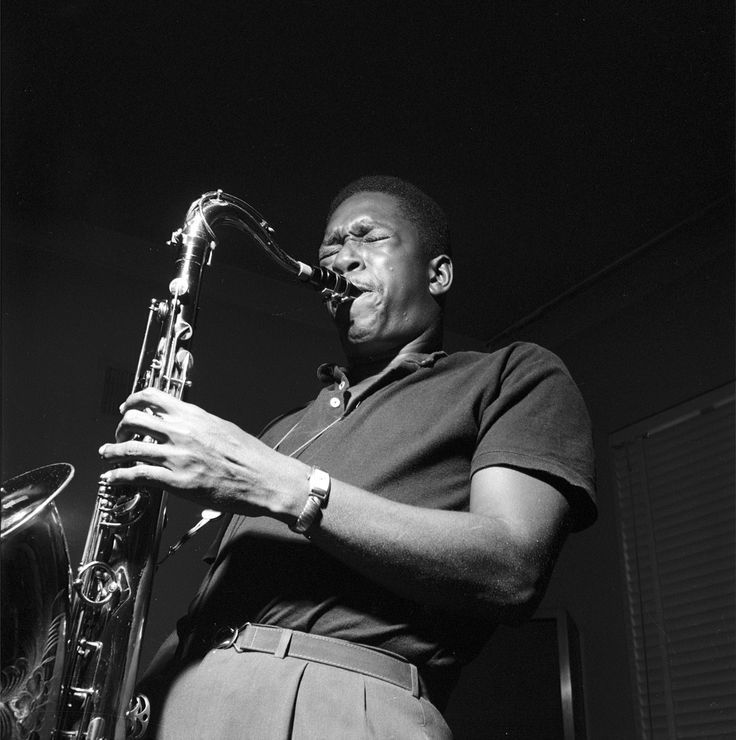
Post Bop, a jazz music subgenre that evolved in the early to mid-1960s, represents a fusion of earlier jazz styles with modern elements. It grew out of the Hard Bop genre, as musicians like Bill Evans, Wayne Shorter, and Herbie Hancock began introducing more extended harmonies and abstract structures into their playing and compositions. This genre is characterized by a blend of Hard Bop’s rhythmic intensity with the more exploratory harmonic and melodic concepts of modal and free jazz.
One of the defining features of Post Bop is a slower harmonic rhythm, reminiscent of modal jazz. Musicians in this genre often played both “inside” and “outside” the underlying harmonic structure, employing techniques such as harmonic or metric superimposition. The rhythm section in Post Bop took an interactive or conversational approach, moving away from the strict time-keeping role of earlier styles.
Miles Davis was particularly influential in the development of Post Bop during the 1960s. His second quintet, active from 1964 to 1968 and including musicians such as pianist Herbie Hancock, bassist Ron Carter, saxophonist Wayne Shorter, and drummer Tony Williams, was seminal in this regard. They recorded six studio albums that introduced and defined Post Bop: “E.S.P.” (1965), “Miles Smiles” (1967), “Sorcerer” (1967), “Nefertiti” (1968), “Miles in the Sky” (1968), and “Filles de Kilimanjaro” (1968).
Post Bop continued to evolve and by the 1990s, it had become a norm for jazz, incorporating elements from various jazz styles and periods. This genre symbolizes the eclectic scene of modern jazz as it entered its second century, with artists like Wallace Roney and John Scofield being notable examples.
Post Bop thus represents a significant phase in the evolution of jazz, marking a period of experimentation and synthesis that broadened the horizons of the genre.
8. Smooth Jazz
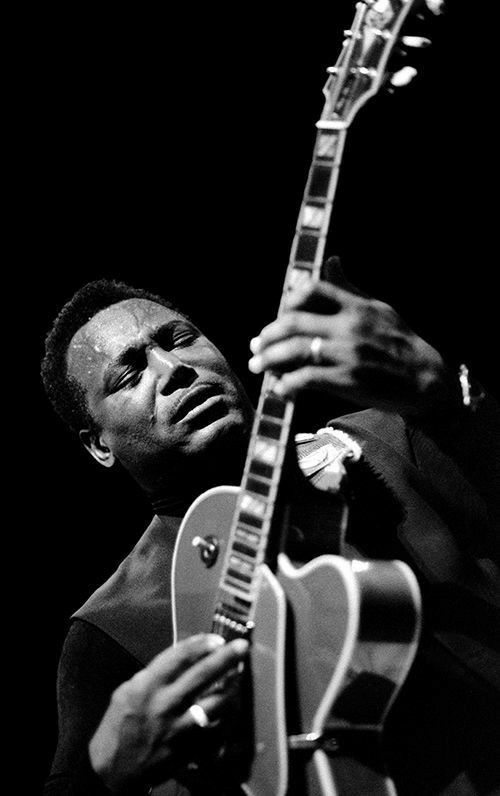
Smooth Jazz, which came into prominence in the 1980s and 90s, is a subgenre of jazz known for its blend of jazz with pop and R&B elements. It evolved from the more adventurous jazz fusion, becoming a commercially oriented and crossover jazz style. This genre is characterized by its polished and refined sound, often prioritizing rhythms and grooves over improvisation. Smooth Jazz typically incorporates layers of synthesizers, lite-funk rhythms and bass, elastic guitars, and uses instruments like trumpets, and alto or soprano saxophones.
Key artists in the development of Smooth Jazz include George Benson, who joined producer Creed Taylor at CTI in the late 60s and became a leading exponent of the genre. Other notable artists include saxophonists like David Sanborn, Stanley Turrentine, Grover Washington Jr, and Kenny G. These musicians were considered the founding fathers of what is now known as Smooth Jazz. Their work incorporated elements of pop, rock, disco, Latin, and classical music, seamlessly merging them in a way that often blurred the lines between the genres.
Smooth Jazz peaked in popularity in the early 2000s. While it faced criticism for being a more commercial and less complex form of jazz, it played a significant role in keeping jazz relevant and accessible to a wider audience during its peak times. Artists like Jeff Lorber, Boney James, and Richard Elliot have continued to lead the genre, with new talents like Lindsey Webster and Tyler Reese representing a new generation of Smooth Jazz musicians.
The style of Smooth Jazz is not just about creating a soothing ambiance; it also served as a means for musicians to adapt and survive in the changing music industry. The genre’s mellow soundscapes and flowing melodies offer a relaxing experience, underlining the versatile and adaptive nature of jazz music itself.
9. Jazz Fusion
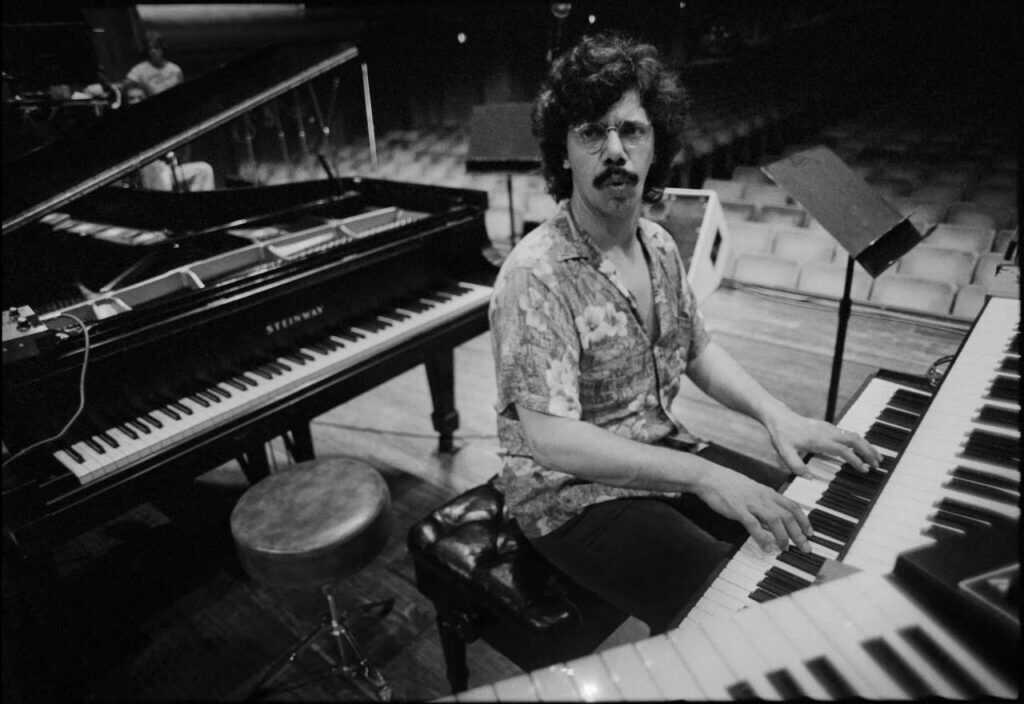
Jazz Fusion, emerging in the late 1960s, represents a significant evolution in jazz music by blending it with elements of rock, funk, and later, electronic music. This genre marked a radical shift from the traditional jazz styles, appealing to a broader audience by merging the improvisational aspect of jazz with the energy and rhythms of rock.
Miles Davis played a pivotal role in the establishment of Jazz Fusion with his groundbreaking album “Bitches Brew” in 1969. This album fused jazz improvisation with elements of rock and funk, using electronic instruments alongside traditional jazz instruments. Inspired by artists like Jimi Hendrix, James Brown, and Sly and the Family Stone, “Bitches Brew” set the tone for the contemporary jazz fusion sound, moving away from swing beats to rock and roll backbeats and bass guitar grooves.
Other key figures in the Jazz Fusion movement include guitarists Larry Coryell and John McLaughlin, and keyboardists Chick Corea and Herbie Hancock. McLaughlin formed the influential Mahavishnu Orchestra, blending Indian classical music with jazz and psychedelic rock. Herbie Hancock, following Davis’s lead, also experimented with technology and rock and funk styles, particularly in his album “Head Hunters” (1973).
Jazz Fusion continued to evolve throughout the 1970s and 1980s, with artists incorporating elements of pop, funk, and later, electronic music, thereby creating a genre that was both commercially successful and musically sophisticated. This era saw Jazz Fusion creating a distinct identity, combining the best elements of jazz, rock, and funk, despite some criticism from jazz purists.
The influence of Jazz Fusion is still evident today, as it opened creative and financial vistas for musicians and broadened the audience for jazz, rock, and funk.
10. Avant-Garde Jazz
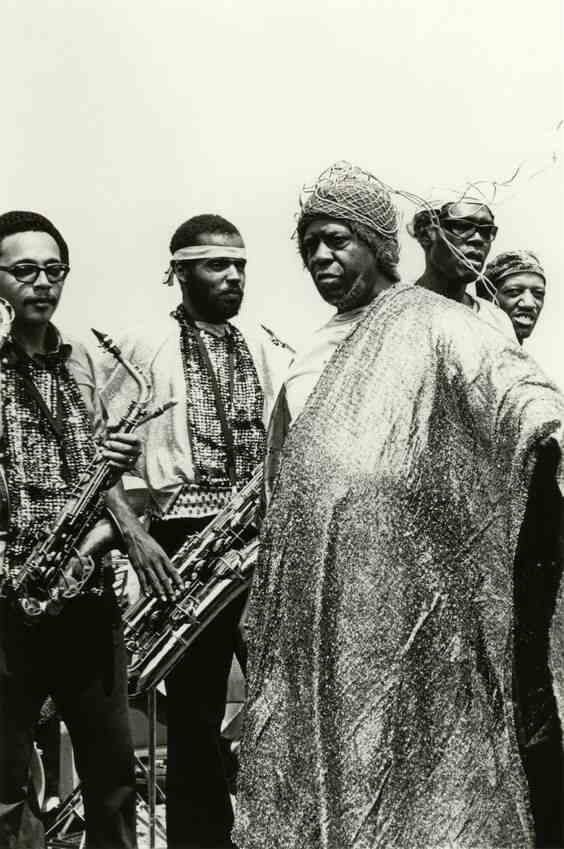
Avant-Garde Jazz emerged as a groundbreaking genre in the 1960s, revolutionizing the jazz world with its radical approach to harmonies and rhythms. This style of jazz is known for pushing beyond traditional boundaries, offering a new and experimental sound palette. Unlike free jazz, avant-garde jazz often maintains a semblance of structure in its compositions, though it allows for free-form improvisation that breaks away from conventional musical norms.
Pioneering artists like Cecil Taylor, Ornette Coleman, and Sun Ra were instrumental in the development of avant-garde jazz. Their work introduced novel harmonic concepts and rhythmic structures that significantly deviated from the established jazz forms. John Coltrane, another key figure in this movement, ventured into avant-garde jazz with his later works, including the groundbreaking album “A Love Supreme.” His collaborations with artists such as Alice Coltrane and Pharoah Sanders further exemplified the genre’s experimental nature.
The impact of avant-garde jazz on the broader jazz landscape is significant. It opened doors for future explorations in jazz, influencing a wide array of subsequent styles and artists. The avant-garde approach challenged and expanded the conventional understanding of jazz, showcasing the genre’s capacity for continuous evolution and creativity. This genre remains a vital part of jazz history, reflecting the music’s ongoing dialogue between tradition and innovation.
Jazz’s Influence on Other Music Genres
Jazz music, a genre known for its innovation and complexity, has profoundly influenced various other music genres like Rock, R&B, and Hip-Hop. Its impact is evident in their rhythms, harmonies, and improvisational elements.
Rock Music:
- Jazz’s influence in Rock can be seen in the work of iconic bands like The Beatles and Pink Floyd. The Beatles‘ “Honey Pie” is an homage to British “music hall” entertainment, borrowing elements from the big band swing sounds of jazz. Pink Floyd’s “Time” features major 7th chords, minor 7th chords, and dominant 7th chords with extensions such as the ♭9 and ♭5, reminiscent of jazz harmony.
R&B Music:
- In R&B, Ray Charles and Amy Winehouse are prime examples of artists who fused Jazz elements into their music. Charles, often considered the pioneer of soul music, blended jazz, gospel, and blues, while Winehouse’s style was heavily influenced by jazz, evident in her album “Frank.”
Hip-Hop Music:
- Hip-Hop’s connection with Jazz is significant, with artists and groups like A Tribe Called Quest and Kendrick Lamar incorporating Jazz samples and styles into their music. A Tribe Called Quest’s album “The Low End Theory” is notable for its extensive use of Jazz samples, bridging the gap between Jazz and Hip-Hop.
Historical Context and Techniques:
- Historically, Jazz’s improvisational style and complex harmonies have influenced rock musicians from the bebop era onwards. In Hip-Hop, the improvisational nature of Jazz is mirrored in freestyle rapping, while in R&B, the influence of Jazz’s expressive depth and rhythmic nuances are evident.
By acknowledging these specific examples and the broader historical context, we see how Jazz has not just influenced the sound of these genres but also their techniques and approaches. This rich legacy highlights Jazz’s enduring impact on the wider musical landscape.
Conclusion
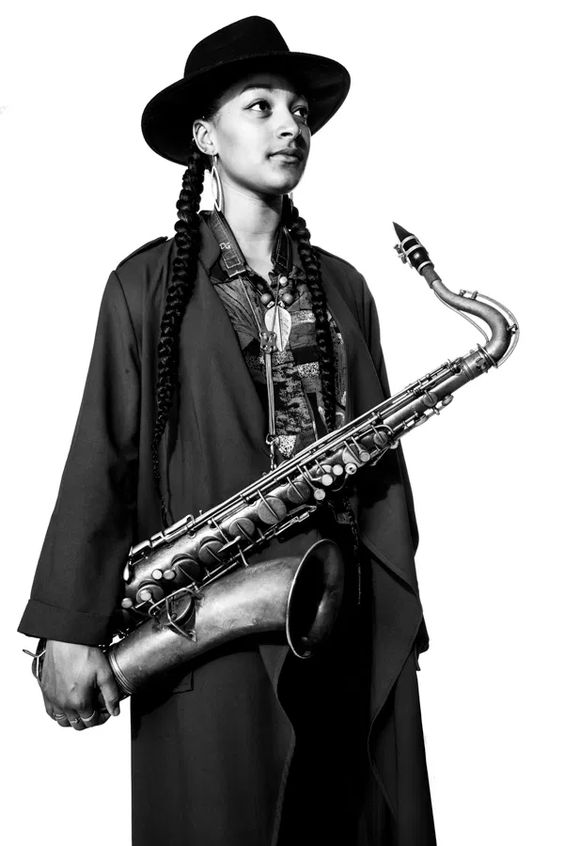
The enduring legacy of Jazz lies in its ability to continuously reinvent itself while maintaining its core essence. Its influence extends beyond its own genre, seeping into the realms of Rock, R&B, Hip-Hop, and beyond, showcasing its universal appeal and adaptability. Jazz’s improvisational nature and emphasis on individual expression have made it a powerful medium for artistic expression and cultural commentary.
Recent years have seen a surge of talented artists who are reshaping the jazz landscape. For instance, British jazz artist Nubya Garcia, known for her saxophone prowess and her debut album “Source,” combines elements of Afrobeats, Neo-Soul, and experimental sounds. Alfa Mist, a pianist and music producer from East London, weaves heavy beats into his music, reflecting modern influences. Masego, a musician from Virginia, incorporates smooth vocals and saxophone into his work, exemplifying the modern jazz style. Cherise, recognized as Jazz FM’s Vocalist of the Year in 2020, blends vocal Jazz with touches of modern R&B in her EP “REMEDY.”
Grammy award-winning producer and saxophonist Venna’s sophomore project “EQUINOX” is another example of the fusion of modern jazz with Hip Hop and R&B. Artists like Camille Munn, Harleighblu, and Nubiyan Twist are also making significant contributions to contemporary jazz, each bringing their unique influences and styles to the genre.
Albums like “Playing With Fire” by Jane Bunnett and Maqueque, “Black Classical Music” by Yussef Dayes, and “Alive at the Village Vanguard” by Fred Hersch & Esperanza Spalding set high standards in modern jazz, showcasing the genre’s adaptability and innovation.
Jazz continues to influence and be influenced by other music genres, maintaining its relevance in the modern music landscape. This ongoing evolution, marked by the contributions of contemporary artists, underlines jazz’s capacity to adapt and thrive, promising a dynamic and exciting future for the genre.
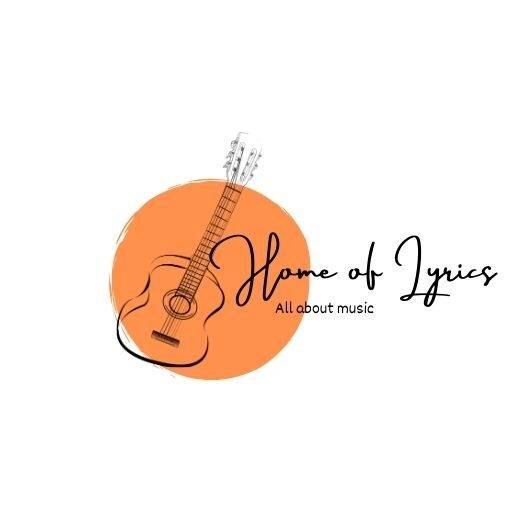


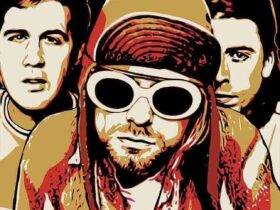
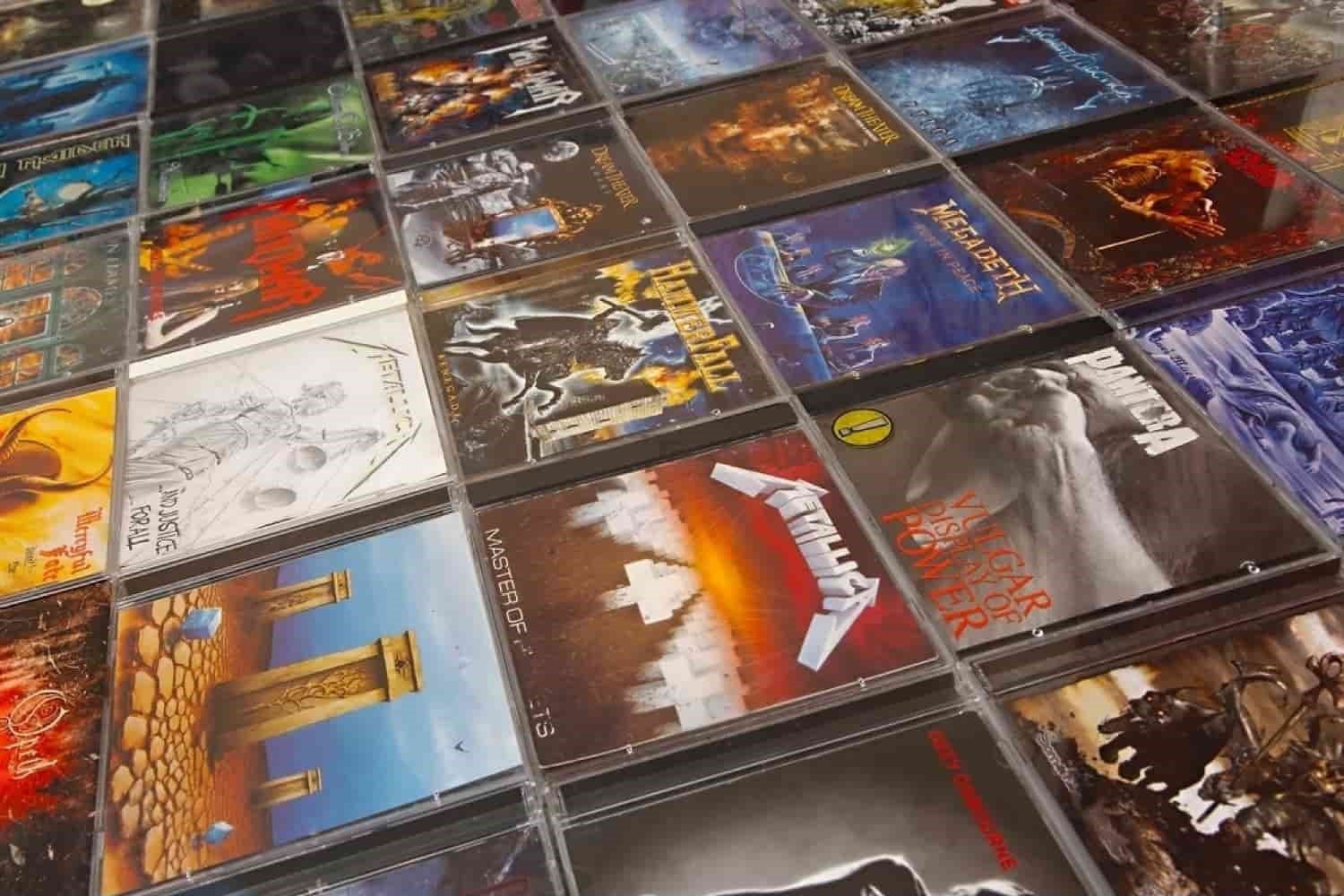
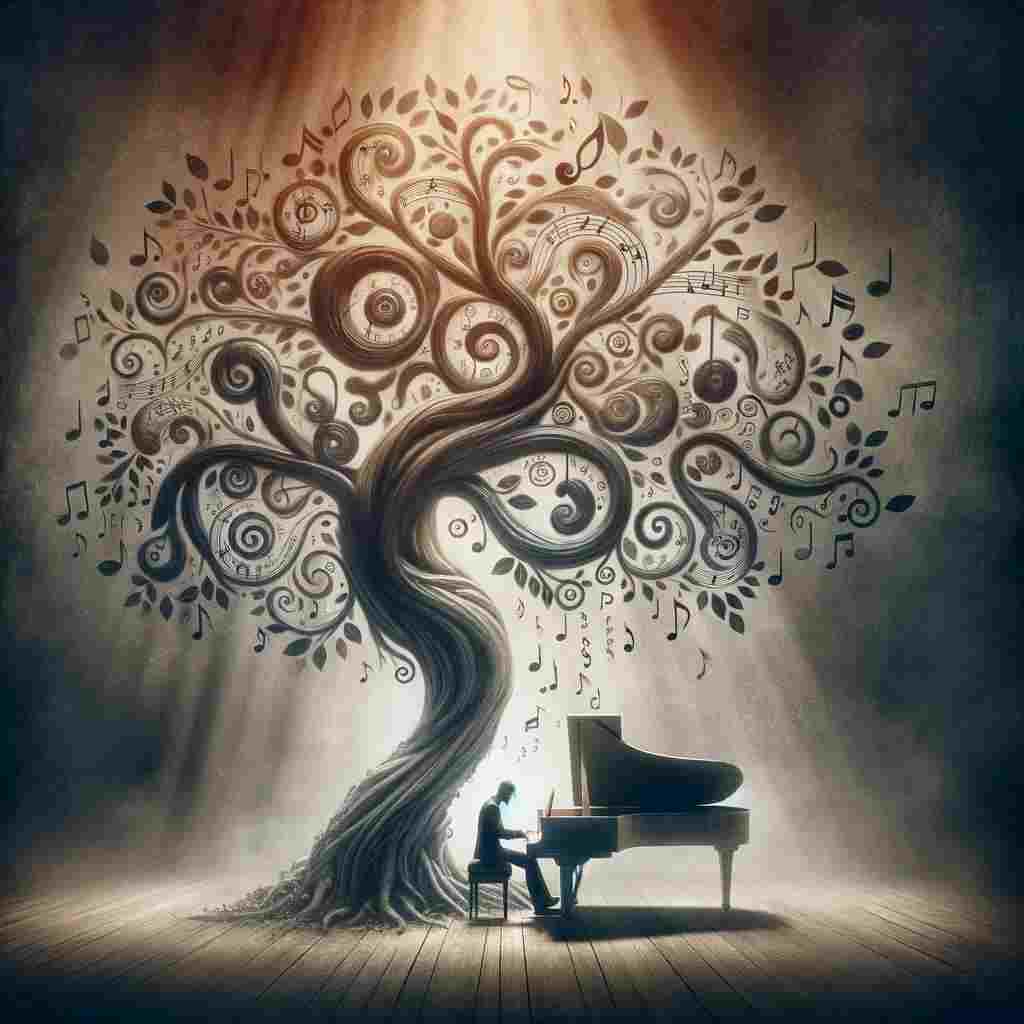
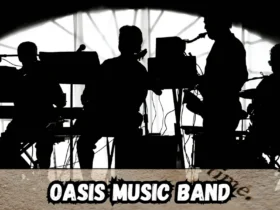

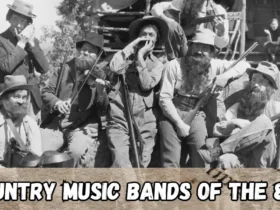
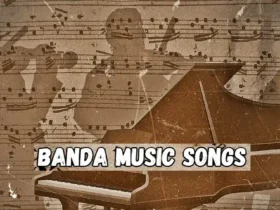
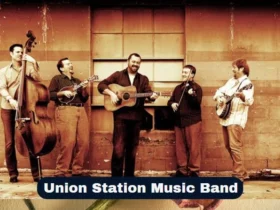
Срочное лечение травм зубов в нашей клинике: эффективные решения
травма зуба лечение [url=http://www.ushib-zuba.ru]http://www.ushib-zuba.ru[/url] .
Выбор зубного имплантата: на что обратить внимание
зубной имплант [url=http://implantaciya-kemerovo.ru/]http://implantaciya-kemerovo.ru/[/url] .
Семейный отпуск без забот: лучшие отели для детей и их родителей
отели 5 звезд рейтинг [url=http://www.reitin-otelei.ru]http://www.reitin-otelei.ru[/url] .
Создайте идеальное пространство с металлическими лестницами на заказ
лестницы на металлокаркасе [url=https://lestnica-metallokarkas.ru/]https://lestnica-metallokarkas.ru/[/url] .
Dominate the Battlefield: Amirdrassil Carry Buy Strategies
amirdrassil raid carry [url=https://amirdrassil-boost.com/]https://amirdrassil-boost.com/[/url] .
Dominate the Game: WoW Boosts for Serious Gamers
wow boosting services [url=https://www.wow–boost.com]https://www.wow–boost.com[/url] .
The Best Time to Buy Real Estate: Insights and Trends
real estate search [url=http://realestate-port.com/]http://realestate-port.com/[/url] .
Отдых в Абхазии без посредников: Прямое бронирование и экономия
отдых в абхазии [url=http://www.otdykh-v-abhazii.ru]http://www.otdykh-v-abhazii.ru[/url] .
Медикаментозное лечение наркозависимости: Эффективность и безопасность
стационарное лечение наркомании [url=http://vse-o-lechenii-narkomanii.ru/]http://vse-o-lechenii-narkomanii.ru/[/url] .
Больничный лист для удаленной работы: Новые правила
стоимость больничного листа за 1 день [url=https://www.bolnichnyj-list-495.ru/]https://www.bolnichnyj-list-495.ru/[/url] .
Срочный сантехник: оперативная помощь при аварийных ситуациях
вызов сантехника на дом спб [url=uslugi-santekhnika-1.ru]uslugi-santekhnika-1.ru[/url] .
Вызов сантехника по лучшим ценам: с нами выгодно
вызов сантехника на дом спб [url=https://vyzov-santekhnika1.ru]https://vyzov-santekhnika1.ru[/url] .
Снять жилье в Крыму: как не попасть на деньги к посредникам
отдых крым [url=https://www.otdyh-v-krimy.ru]https://www.otdyh-v-krimy.ru[/url] .
Одноразовые костюмы для строителей: Защита при любых условиях работы
Одноразовая спецодежда [url=https://odnorazovie-halatyi.ru/]https://odnorazovie-halatyi.ru/[/url] .
Протирочные материалы для чистоты на производстве: Какие выбрать
Мешки для мусора [url=https://www.odnorazovie-halatyi.ru/]https://www.odnorazovie-halatyi.ru/[/url] .
Быстрый вызов сантехника: оперативное реагирование на вызов
механическая чистка канализационных труб [url=https://vyzov-santekhnika78.ru/ustranenie-zasorov/mehanicheskaya-ochistka-kanalizatsij]https://vyzov-santekhnika78.ru/ustranenie-zasorov/mehanicheskaya-ochistka-kanalizatsij[/url] .
Качественный ремонт сантехники в вашем городе – быстро и надежно
стоимость установки унитаза [url=https://www.vyzov-santekhnika-2.ru/ustanovka-unitaza/]https://www.vyzov-santekhnika-2.ru/ustanovka-unitaza/[/url] .
Сантехнические работы: качество, гарантия, доступные цены
замена труб под ключ [url=http://www.vyzov-santekhnika01.ru/zamena-trub/]http://www.vyzov-santekhnika01.ru/zamena-trub/[/url] .
Всё о клининге: найдите лучший сервис уборки для вашего дома
клининговая служба [url=https://kliningovaya-companya-v-moskve.ru/]https://kliningovaya-companya-v-moskve.ru/[/url] .
Доставка алкоголя в Москве: ваши любимые напитки всегда под рукой
доставка алкоголя москва [url=http://www.dostavka-alkogolya-moskva.ru/]http://www.dostavka-alkogolya-moskva.ru/[/url] .
Самые новые займы онлайн: Выбирайте лучшее, забудьте о худшем
взять займ на карту новые [url=http://www.novie-zajmy.ru/]http://www.novie-zajmy.ru/[/url] .
Как найти лучшую клинику для вывода из запоя в Петербурге
вывод из запоя санкт [url=https://vivod-iz-zapoya-79.ru]https://vivod-iz-zapoya-79.ru[/url] .
Идеальный каркасный дом: недорого, быстро, качественно
каркасные дома под ключ недорого [url=https://www.karkasnyedomaspb.ru]https://www.karkasnyedomaspb.ru[/url] .